Stop Cop City and the Insurrectionary Horizon
Jarrod Shanahan and Zhandarka Kurti
The present article, excerpted from the final chapter of Jarrod Shanahan and Zhandarka Kurti’s new book, Skyscraper Jails. The Fight against Jail Expansion in New York City, argues that the Stop Cop City movement in Atlanta offers a compelling paradigm to rethink abolitionism in the present. The importance of this movement cannot be narrowly indexed to the obstruction of this or that specific police infrastructure; its deeper merit, they argue, lies in articulating a form of abolitionist struggle oriented to an insurrectionary horizon. The movement’s courageous refusal “to meet the capitalist state on its own terms” offers a way forward “in a moment defined by a dangerous impasse of leftist praxis.” Fusing the traditions of eco-defense and insurrectionary anarchism, the example set in Atlanta invites us to turn away from Defund-oriented reformism so easily co-opted by politicians and commodified by career academics and nonprofit grant writers. Lacking an orientation toward insurrectionary class struggle, abolitionism remains unable to meaningfully link current forms of struggle to a liberated postrevolutionary future. According to the authors, “the only possible victory for abolitionism will come through an illegal and highly unsafe confrontation with the capitalist state.”
Just a year after the George Floyd rebellion and the local police killing of Rayshard Brooks, Atlanta city officials proposed a controversial new plan to build a sprawling police training center in a primarily Black working-class neighborhood, on the present site of one of the last green places left in the city, the Weelaunee Forest. For local activists, the political context was clear: the spectacular street militancy in Atlanta and elsewhere in 2020 had further delegitimized police forces already reeling from well-deserved public contempt, and these forces in turn found it increasingly difficult to maintain their rank and file’s morale. Many cops walked away from their jobs, and in cities across America, law enforcement agencies continue to claim difficulty recruiting new officers.1 Faced with a deepening legitimacy crisis within its own ranks and among the broader public, the Atlanta Police Foundation, a private-public consortium, found the answer in a shiny new police training complex, the Atlanta Public Safety Training Center, which activists have derisively called Cop City.2
In June of 2021, city council members approved the authorization for a development project that would lease the forest, an estimated 381 acres located in the unincorporated southwest part of Dekalb County, to the Atlanta Police Foundation. The proposed site will serve as a $90 million police training facility, a third of which is being paid by the taxes of city residents. The rest is being funded by the Atlanta Police Foundation, a large US policing nonprofit, second only to its New York City equivalent, as well as by private corporations, including Home Depot and Chick-fil-A.3 According to the center’s website, the massive training complex will include an “auditorium for police/fire and public use,” a “mock city for burn building training and urban police training,” and an “Emergency Vehicle Operator Course for emergency vehicle driver training,” as well as a gun range and a K-9 unit kennel.4 Evoking the same rhetoric of reimagining the punishment system that we saw in the skyscraper jails and other projects of the carceral nonprofits, the Atlanta Police Foundation argued that the new training center would “reimagine law enforcement training, catapulting APD and Atlanta Fire Rescue to the vanguard of major urban law enforcement agencies.”5
Nonetheless, Cop City, it seems, is quite unpopular in Atlanta. In a virtual Atlanta City Council meeting held on September 8, 2021, ahead of the city council vote, an estimated 70 percent of the callers opposed the proposal.6 Nearly three hundred people had signed up for public comments, forcing council members to extend the meeting to two days. According to the Atlanta Journal-Constitution, the city council received 1,166 comments — totaling seventeen hours of audio.7 Many residents opposed the plan on the grounds that it would lead to further police militarization in a predominantly Black city, the effects of which were fresh on their minds. Others argued that the Atlanta Police Department already receives a third of the city’s budget, and the new proposed facility would just increase its power and scope.8 Yet, against the wishes of Atlanta residents, in the summer of 2023, Atlanta’s city council voted 10–4 to lease the land to the Atlanta Police Foundation to build Cop City. As we write, the struggle continues.
Since the plan for Cop City was announced, activists have opposed its construction with a diversity of tactics. These have included the traditional mechanisms of working through local governing bodies like the city council and, most recently, employing an impressive petition campaign that gathered over 100,000 signatures.9 But the movement has also been defined by rowdy street marches and protests in downtown Atlanta and at the construction company offices, raves and parties in the Weelaunee Forest, the sabotage of construction equipment, and protracted occupation of the forest itself by dedicated activists known as forest defenders. These actions have drawn in a large number of young people, many of whom are new to political organizing and seek to escape their low-wage jobs and find in Stop Cop City a struggle worth fighting.10


Weaving together movements for racial, economic, and environmental justice, “the Stop Cop City movement has made Atlanta an epicenter of abolitionist organizing,” write organizers Micah Herskind and Kamau Franklin. The movement has no single unifying political framework; it includes abolitionists, anarchists, communists, liberals, libertarians, environmentalists, voting and civil rights activists, Indigenous and antisettler-colonialism organizers, and many more who may not identify with a particular political philosophy but who all choose trees over cops, transparency over backroom deals, and community resources over a burgeoning police state.11
Similarly, activist Hugh Farrell has recently noted,
The constellation of camps in the forest, as well as the various social segments that populate the movement — the elementary schoolchildren and their parents, visitors from outside Atlanta, the ravers, the community organizers and canvassers in the surrounding Black neighborhoods, trans activists and naturalists — are as marked by their connections and their relations as much as by their decentralization.12
Virtually anyone and everyone has been welcomed to join the fight against Cop City, leading to an impressive coalition that spans Atlanta, with solidarity organizing nationwide.
From the narrowly practical perspective of stopping Cop City from being built, each of these tactics stands equal to the rest, provided they get the desired result. But what is the real promise of the #StopCopCity campaign? Just as preventing the skyscraper jails would not end incarceration in New York City, stopping Cop City will not abolish the police, the prison system, or capitalism. Preventing the facility from being built will likely be counted by many as a step toward abolitionism, but this will remain an open question, as the cops would still get their training somewhere else, to the extent American cops need any more militarized training than they’ve already received, whether in their local department or a previous career in the military. A victory against Cop City would surely be a boon for progressives and radicals in Atlanta, and a political embarrassment for its boosters. But it is hard to imagine that simply stopping the facility would make the balance of forces much different from what it was in the years before — especially if this is accomplished by a ballot referendum that serves to legitimize the city government and integrate organizers into it.
What makes #StopCopCity the most important struggle of our moment, then, is not the possibility of stopping this monstrosity from being built. It is instead the tantalizing image of an abolitionist struggle oriented to an insurrectionary horizon. In particular, it is the movement’s illegal tactics that have drawn the most attention and have captured imaginations all over the world, leading to thousands of people taking heroic risks together in Atlanta. The Weelaunee Forest has been the scene of brave and decisive actors striking against the carceral state, taking it as an external foe rather than as a terrain of technical intervention. The law is a shield. The forest defenders are our sword! Their courage and unwillingness to meet the capitalist state on its own terms is a guiding light in a moment defined by a dangerous impasse of leftist praxis.
The forest defenders are, of course, part of a long tradition of eco-defense tactics used against extractive and infrastructure projects and more recently aimed at carceral construction.13 The enduring influence of the righteous struggle at Standing Rock, especially its rich diversity of tactics, is palpable as well.14 The forest defenders also built off a tradition of insurrection seen across the United States, such as in the George Floyd rebellion, which in turn had used a set of practices developed in previous decades of struggle around the world.15 But in the case of Stop Cop City, these tactics are on the verge of merging with the more traditional practices of abolitionism and community organizing to create the skeleton of the kind of formidable fighting force a successful revolution against capitalism requires.
Of course, Stop Cop City’s illegal aspects have also made it vulnerable to harsh state repression. On January 18, 2023, state troopers descended on a forest defender encampment and murdered twenty-six-year-old Manuel “Tortuguita” Terán. The cops later alleged that Tortuguita fired first, but the report from the DeKalb County Medical Examiner’s Office found no trace of gun residue powder on them.16 Even more egregious was the fact, later disclosed, that Tortuguita evidently had their hands up.17 And Tortuguita’s murder was just the beginning of the state flexing its power to defeat the movement. Most recently, in September 2023, sixty-one activists were indicted by a Georgia grand jury under the Racketeer Influenced and Corrupt Organizations Act (RICO), deployed to treat the Stop Cop City movement as a “criminal enterprise” that the government traces back to the George Floyd rebellion of 2020.18 The 109-page indictment reveals deep state surveillance of activists, including the monitoring of zine publications and flyers stating opposition to Cop City and internet accounts mentioning the coordination of mutual aid activities like buying food. The indictment accuses Atlanta Solidarity Fund activists of being the brains behind the “criminal enterprise,” and the organization accordingly faces money laundering and racketeering charges for essentially raising money to bail protestors out. The state is using RICO as a tool to recast the activities of activist work and organizing (bailing people out of jail, writing letters to incarcerated people) as a criminal conspiracy.19
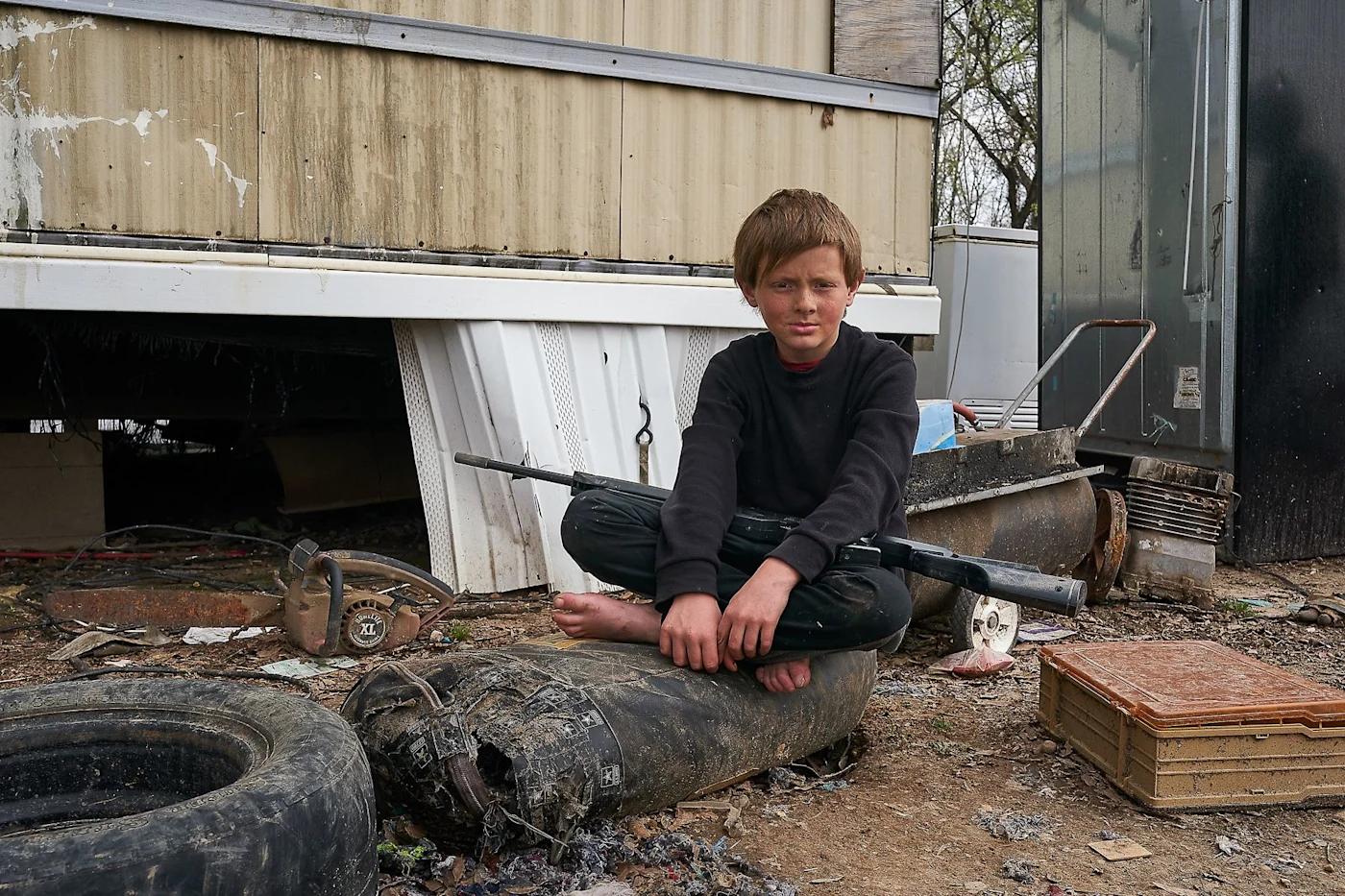
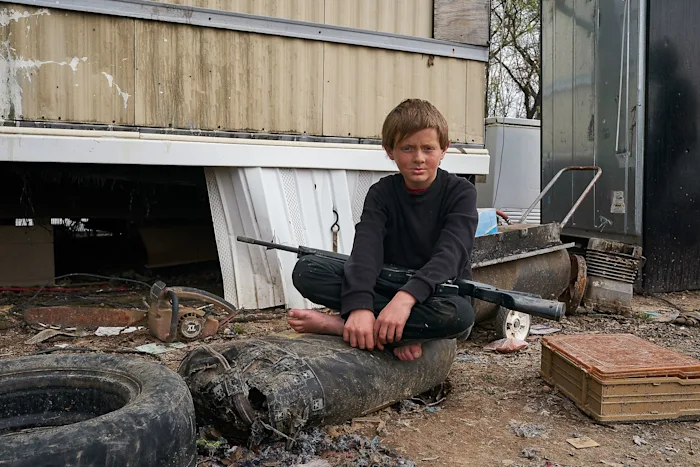
As many activists have noted, this legal maneuver by the state sets a dangerous precedent for movements against police and carceral power, including spreading fear to prevent further organizing. But it also means the state is taking notice. The example set in Atlanta, of bridging the ordinary toolbox of abolitionism and community organizing with the traditions of eco-defense and insurrectionary anarchism, offers a path forward, away from easily co-opted work undertaken within the halls of power, insular universities, and nonprofits beholden to the charity of elites. And given that so much of liberal activism revolves around demonizing and vilifying the brave militants who practice illegal protest tactics, it is particularly powerful to see that the movement in Atlanta has yet to be disorganized by the old racist trope of “outside agitators,” shopworn privilege-baiting, and other weapons of the counterinsurgency seen in 2020.20 To the extent that any struggle in the United States today shows the path forward, it is Atlanta, in all its rowdy, militant, and illegal glory.
Illegality cuts to the heart of the matter. “The central political issue/obstacle is the legitimacy of capital,” argued Don Hamerquist in the midst of the Occupy Wall Street movement. Hamerquist emphasized illegality at a time when the movement risked shifting from a dynamic and formidable challenge to capitalist hegemony to a fairly predictable and landlocked exercise in speaking truth to power, as the progressive wing of the ruling class had already begun demonstrating its ability to subsume key ideological components of Occupy into a business-friendly variant of left populism. In contrast, large-scale illegality refuses to recognize the legitimacy of the capitalist state — standing as a visible rebuke to it — and cannot be welcomed inside. Moving forward, Hamerquist concluded, “the challenge must be embodied in a politics and culture of resistance that understands and embraces its ‘illegality’ — rather than its ‘democracy,’ or its ‘representative’ character, or even its ‘militancy.’”21 While this largely remained a road not taken for Occupy, the forest defenders have demonstrated the awesome power of unapologetic illegality in drawing hard political lines, resisting co-optation, and actually pulling people leftward.
The repression in Atlanta, therefore, does not discredit the illegality of the movement. Quite the opposite. This is the response that can be expected when the state begins to take us seriously. Repression of this scale, and worse, is inevitable as struggle deepens. The need for enduring community support in the face of repression, as well as for better communal practices of security and care, highlight the necessity of developing a robust revolutionary culture that builds on care work, mutual aid, and traditional community organizing.22 The tantalizing combination of above-ground organization and clandestine activity seen in Stop Cop City has raised a number of important political questions, alongside very real dangers, both of which are equally unavoidable in moving forward toward any revolutionary horizon.23
We must particularly emphasize that the above-ground practices of mutual aid and care, which one could call the social reproduction of struggles, are sometimes wrongfully counterposed with street militancy, when they are in fact a necessary component of its success. Feminist philosopher Kelly Gawel invites us to conceptualize the practice of militant care, a communal “striving to cultivate a relational container capable of holding each other’s pain, and of generating political power.”24 Many tasks that are vital to even a short-lived insurrectionary moment, such as jail support, anti-repression work, mutual aid, and care for emotional and physical harm are often carried out far from the spectacle of the street fight. It is necessary, therefore, to recognize and uplift this work, which is disproportionately done by women and femmes, and not allow it to become the foil for more confrontational tactics. These activities are not only valid in themselves, but indispensable to any successful revolution. Thankfully, the fusion of street militancy with practices of care and social reproduction is not a theoretical advancement we are proposing; it is already a vital component of revolutionary activity wherever it exists.
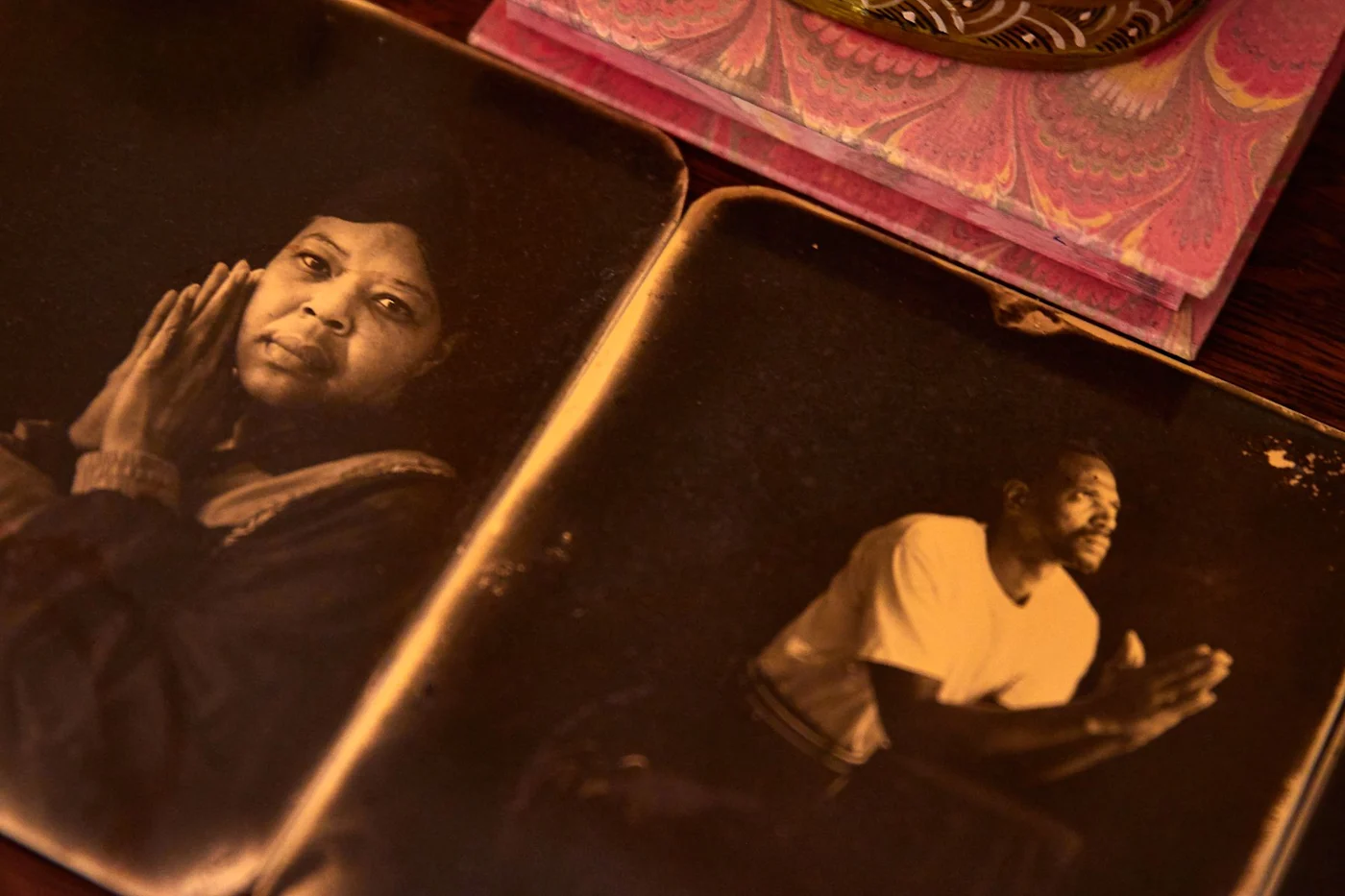
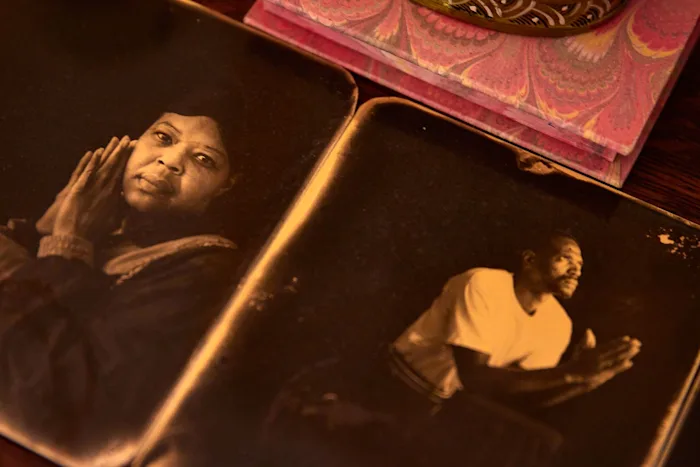
Atlanta may not have solved every problem facing the revolutionary left, but in many important ways, the struggle against Cop City helps show the way forward, beyond abolitionism as a politics in itself, and toward the necessity of communism.
Revolutionary Abolitionism
Abolitionism in the United States today presents the possibility of a revolutionary alternative to the capitalist death cult presently driving life on our planet to the point of extinction. It simultaneously risks falling into the uncanny valley between reformism and revolution, inviting working-class people to imagine a world that actually isn’t possible: a post-revolutionary society without the revolution required to get there. Without the central component of insurrectionary class struggle, the abolitionist vision is missing a giant step between its important praxis in the present day, and a decisively liberated future.
While the right-wing political enemies of campaigns like Defund the Police are effectively correct in saying that the campaign didn’t find significant traction within the US working class, this perhaps isn’t the smoking gun against radical politics they think it is.25 It is just as likely that people who might be friendly to the ultimate aim of the movement simply cannot imagine a shift in municipal budgets delivering the kind of widespread social change necessary to dislodge the police from their central role in social reproduction. And are they wrong? Regardless, it is clear that until a critical mass of people believe that another world is possible, half measures like Defund the Police will continue to fall on deaf ears among a populace that has learned from experience to expect very little from its society. If anything, the experience of Defund the Police proves abolitionist conventional wisdom to be backward: instead of meeting reform-minded people where they were and slowly turning them into revolutionaries, the Defund campaign took putative revolutionaries, at a time of great upheaval, and turned them into reformists.
The simple fact is there will be no peaceful transition from our present mess of a society to one that upholds the values of abolitionism. The ruling class, large and small, who own the earth and are busily destroying it, will not surrender the reins of power without the greatest fight this planet has ever seen. Abolitionism, even in its most modest form, demands far more than the ruling class will ever give us of its own volition. Today’s elites are so entrenched and recalcitrant that at this juncture in US history the imposition of even Bernie Sanders’s presidential campaign platform would require strife equaling at least that of the French Revolution, guillotines and all — just as the abolition of slavery and realization of formal equality for Black people required a great, bloody civil war.
The present balance of power, within even liberal democratic states, which shifts the burden of social reproduction onto police and prisons, is an important cornerstone on which the entirety of wealth and power at the top of capitalist society rests. It represents a critical bloc of the ruling class’s combined interest in fiscal austerity, which is itself imposed on them by the objective limits of capitalism, with the political imperative to keep working-class people in a position of extreme powerlessness. Why on earth would they give up this power voluntarily? The willingness of progressive elites to reconfigure the system of mass incarceration demonstrates not the disposability but the grave importance of their coercive power; they are trying to preserve control by tweaking its mechanisms, and perhaps making the mechanisms more “humane.” A complete break from this order is necessary.
“Before abolitionism,” writes scholar Joy James, “there was revolutionary struggle.”26 Revolutionary struggle is the grounds from which contemporary abolitionism sprang, and it must remain the imperative that animates it. As we have argued, contemporary US abolitionism counts among its many strengths an emphasis on the here and now. But this often comes at the expense of a strategic perspective that bridges these vital struggles in the present with a future communist society.27 This is why we believe contemporary abolitionism must — in the spirit of Toussaint L’Ouverture, John Brown, Assata Shakur, the Black Panthers, and countless other abolitionists before us — orient its praxis toward the necessity of revolution.
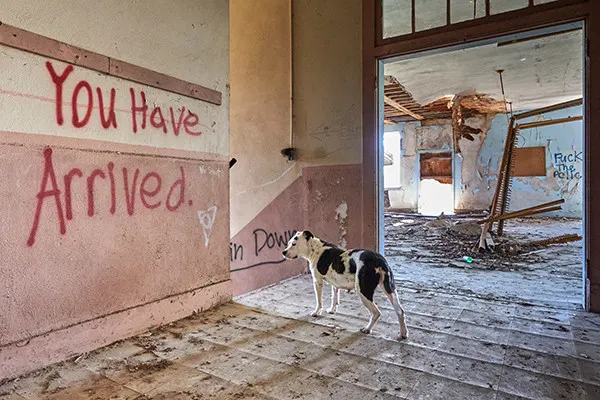

“Abolitionism,” writes Noel Ignatiev, “it has been shown, took shape not in direct opposition to overt proslavery ideas but to moderate elements within the antislavery camp.”28 Many within the US antislavery movement favored a gradualist approach, based on the assumption that emancipation could not be achieved overnight, and would instead be the product of slow, patient work across decades. One faction defined itself as “antislavery,” as opposed to abolitionist, and limited its vision to attacking the power of slave states in the government, versus embracing the necessity to practically abolish the entire system by any means necessary. Moderate antislavery forces attempted technocratic fixes and political jockeying, unwilling to set their horizon on the violent and decisive break with the institution that was necessary to bring it to an end.
Abolitionists of this time engaged in many activities we could call lawful reforms: speaking out publicly, publishing, engaging with electoral politics, and more. These were tactics suitable for a broad-based struggle. Meanwhile, however, runaway slaves continued to take proactive, illegal steps to free and organize themselves, abolitionists agitated tirelessly in preparation for the coming break with legality, and, at last, John Brown and his multiracial band of insurrectionaries took a decisive step toward antislavery revolution, forever altering the political fault lines of the United States and sending the nation careening toward the glorious chaos of full abolition. “Slavery was abolished not through constitutional process but through war and revolution,” Ignatiev concludes.29 We believe, as Ignatiev never tired of arguing, that abolitionists today should closely study the tactics and strategies of their historical predecessors.
To say all this is not to call for political purism or sectarianism. The anticapitalist left is extremely weak in the United States, to whatever extent it can be said to even exist. And no programmatic solution, no matter how convincing on paper, has, as of yet, illuminated a way forward. In a situation so dire, we welcome experimentation and unorthodox thinking. On the most basic level, it is heartening to see anyone on our side winning anything and meeting anyone outside the usual activist circles. We are, therefore, very sympathetic to abolitionists and other activists who are testing out different strategies in important local fights, attempting to build power while simultaneously popularizing leftist ideas among people whose political consciousness largely proceeds from the inevitability of capitalism and the necessity of cutthroat competition for survival.
However, as many abolitionist organizers themselves are quick to point out, the challenges of co-optation are daunting.30 What’s more, even victories on the state’s terrain are subject to revocation. For example, in cities where abolitionists have been successful at halting jail expansions, such as in Los Angeles and Sacramento, the nature of the actual victories is unclear. In 2019, in Los Angeles, abolitionists with the JusticeLA coalition shut down the city’s plans to close down the Men’s Central Jail and replace it with a mental health jail. This was an important victory that relied on abolitionists forming a broad-based coalition with other reformers and progressives, which also led to the push for important decarceration initiatives. But two years later, to the dismay of abolitionists, the jail remained open, and the County of Los Angeles Board of Supervisors voted in March 2023 to build a sixteen-bed facility for incarcerated people with mental health illness inside the decrepit facility.31
We have no intention of being glib about how serious a commitment it is to open a political horizon the likes of which we have glimpsed in Atlanta. Many forest defenders have suffered great consequences, including one who paid the ultimate price. It is instead, with great respect for the sacrifice of the Atlanta comrades, that we emphasize how heroic and necessary their work has been and highlight that the only possible victory for abolitionism will come through an illegal and highly unsafe confrontation with the capitalist state.
Abolitionism charting a revolutionary course will not necessarily mean extreme tactical militancy in situations that do not call for it, nor the addition of revolutionary rhetoric to the same old practices. Instead, a revolutionary abolitionism will mean evaluating present-day praxis based not simply on whether it abets the expansion of the carceral system but also on whether it prepares the ground for heightened struggles to come. We do not offer a magical bridge between isolated practices in the here and the realization of communism. But we believe that holding this goal aloft is the first step, from which future considerations will result.
In immediate practical terms, abolitionists would do well to interrogate more deeply our received ensembles of strategies and tactics. The criteria of “non-reformist reforms,” then, could therefore be further clarified by engaging with a broader set of questions animating future praxis, such as the following:
Does this action build the capacity of people, both individually and within broader organizations, to take initiative independent of the capitalist state and the nonprofit industrial complex, or does it further integrate our political work within these entities?
Does this action prepare for independent, unlawful, pro-revolutionary intervention in moments of crisis such as the 2020 George Floyd rebellion, or does it foreclose the possibility of taking such action by binding politics to lawful, pro-system forms of political participation?
Does this action challenge the racial order, or, alternatively, does it risk strengthening it?
Will the success of this action detract from, or enhance, the legitimacy of one or more layers of state?
Will this action promote loyalty to the liberal democratic process, or will it serve to further delegitimize these institutions and actors?
Is this action leading people into the Democratic Party or smaller parties that ultimately support it, or does it help promote an extraparliamentary left?
Does this action promote a reverence for, or stuckness within, the law, or does it encourage participants to treat the law with disdain and to strive toward tactics that break it?
Will the success of this action potentially bolster the progressive wing of the ruling class, and if so, is that risk worth taking?
Does this action encourage people to defer control over their lives to external powers and authorities, or does it encourage them to cultivate their ability to take direct control over these conditions?
Does this action seek to give a revolutionary leftist meaning to the widespread distrust of the political system and elites that predominates today in the United States?
Ultimately, how does this action relate to the self-emancipation of the working class, the abolition of race, patriarchy, and other modalities of oppression, and the decisive, extraparliamentary supersession of capitalism?
The list, of course, could go on and on. We do not pretend to have crafted the definitive criteria for taking action toward anticapitalist insurrection. Instead, debating and building such values communally must be an important process, entailing a complex, and likely contentious, engagement with vital political questions that are, in the abolitionism of today, largely glossed over in the name of specious unity. This work, no matter how uncomfortable, will be essential. Creating deeper and more dynamic standards for evaluating when and how to take action can help take us beyond the present morass and open up the possibility of what we call “prorevolutionary measures” — like those of the original abolitionists, who, through taking courageous actions within and outside of the law, “brought about a new situation, which led millions to think and act in new ways.”32
Skyscraper Jails. The Fight against Jail Expansion in New York City, is out now with Haymarket Books.
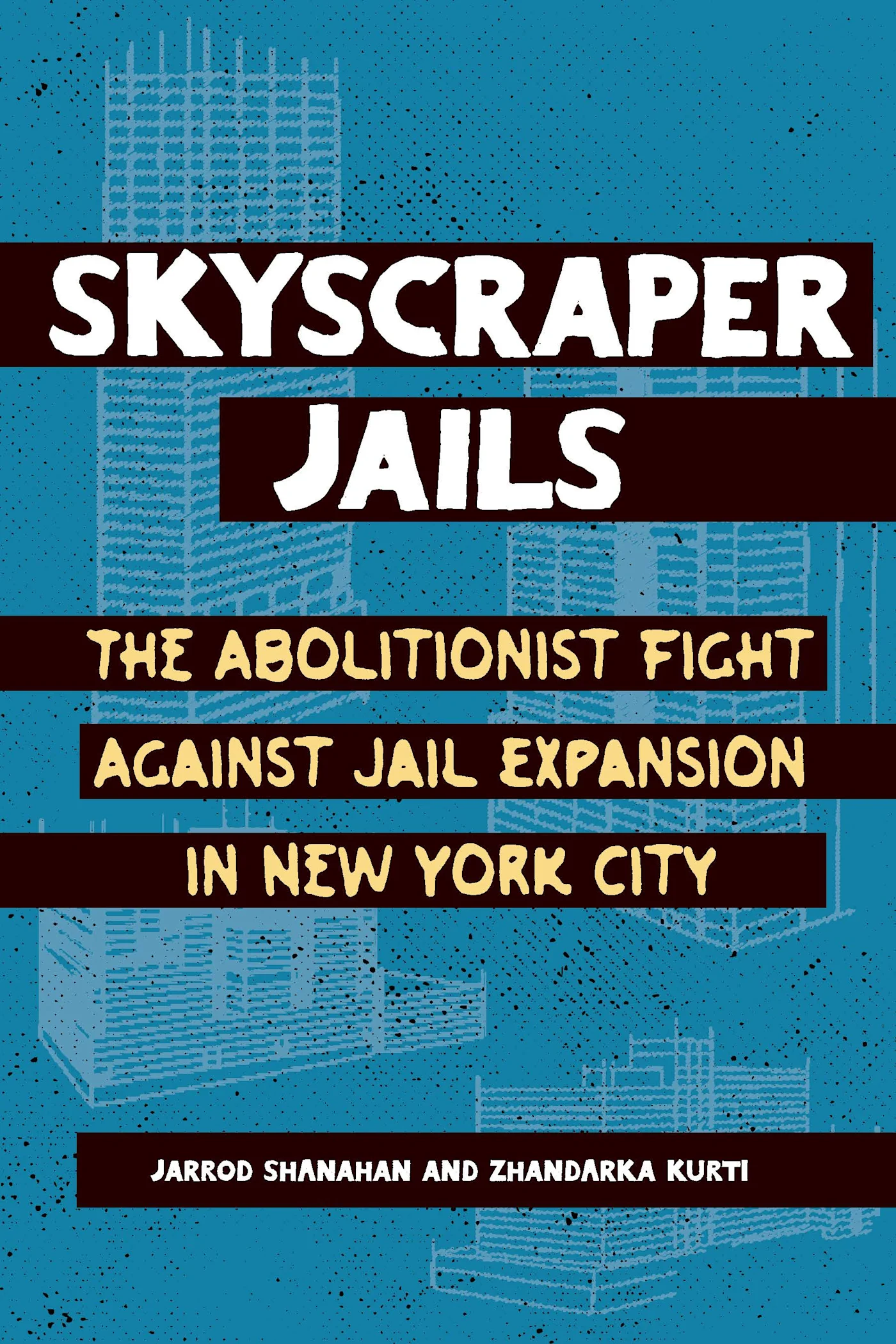
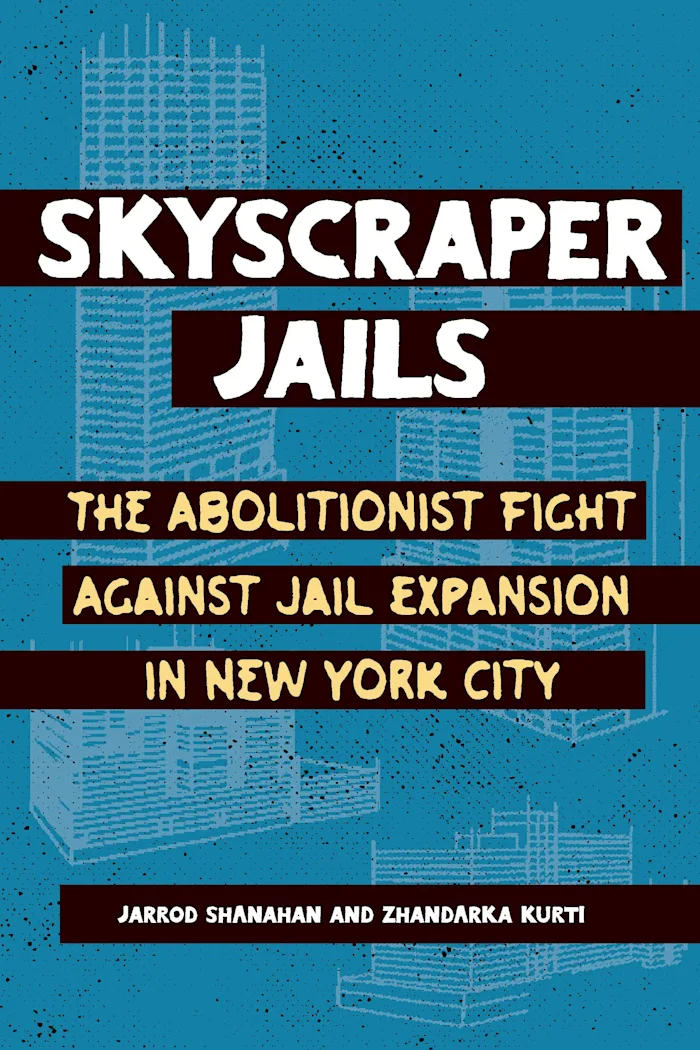
Images: Bob Newman
Notes
1. Associated Press, “The U.S. Is Experiencing a Police Hiring Crisis,” NBC News, US News, September 6, 2023. Online here.↰
2. Micah Herskind, “This Is the Atlanta Way: A Primer on Cop City,” Scalawag, May 1, 2023. Online here.↰
3. George Chido, “George on Georgia: Why Is Atlanta Rushing to Build Cop City in Dekalb County,” February 6, 2023. Online here.↰
4. “About,” Atlanta Public Safety Training Center. Online here. ↰
5. “Public Safety Training Center,” Atlanta Police Foundation. Online here.↰
6. Micah Herskind, “Cop City and the Prison Industrial Complex in Atlanta,” Mainline, February 7, 2022. Online here.↰
7. J. D. Capelouto, Anjali Huynh, and Wilborn P. Nobles III, “17 Hours of Comments Continue to Play before Tonight’s Vote on Atlanta Police Training Center,” Atlanta Journal Constitution, updated September 8, 2021. Online here. ↰
8. Herskind, “Primer on Cop City.”↰
9. Timothy Pratt, “Outcry as Atlanta Refuses to Handle Petitions Over ‘Cop City’ Police Campus,” The Guardian, September 11, 2023. Online here. ↰
10. Hugh Farrell, “The Strategy of Composition,” Ill Will, January 14, 2023. Online here. ↰
11. Micah Herskind and Kamau Franklin, “The Struggle to Stop Cop City—By Any Means Necessary,” The Forge, September 7, 2023. Online here.↰
12. Farrell, “Strategy of Composition.”↰
13. Decompositions, “The Fate of Composition,” April 3, 2024. Online here.↰
14. Nick Estes, Our History Is the Future: Standing Rock Versus the Dakota Access Pipeline (London and New York: Verso, 2019).↰
15. Vortex Group, The George Floyd Uprising (Oakland: PM Press, 2023).↰
16. Natasha Lennard, “Police Shot Atlanta Cop City Protester 57 Times, Autopsy Finds,” The Intercept, April 20, 2023. Online here.↰
17. R. J. Rico, “Autopsy: ‘Cop City’ Protester Had Hands Raised When Killed,” AP News, March 13, 2023. Online here.↰
18. Rick Rojas and Sean Keenan, “Dozens of ‘Cop City’ Activists Are Indicted on Racketeering Charges,” New York Times, September 5, 2023. Online here.↰
19. Micah Herskind, “The Stop Cop City Indictment Is An Act Of Desperation,” The Defector, September 12, 2023. Online here.↰
20. Shemon and Arturo, “The Return of John Brown: White Race Traitors in the 2020 Uprising,” Ill Will, September 4, 2020. Online here.↰
21. Don Hamerquist, “Email on the Historical Situation,” in A Brilliant Red Thread: Revolutionary Writings from Don Hamerquist, ed. Luis Brennan (Montreal: Kersplebedeb, 2022), 108.↰
22. Dean Spade, Mutual Aid: Building Solidarity during this Crisis (and the Next) (London and New York: Verso, 2020).↰
23. A provocative engagement with the strategic questions around generalizing a movement like Stop Cop City into a broader, sustained revolt recently appeared in Ill Will, an important publication offering serious revolutionary perspectives around Stop Cop City and a variety of other struggles. See: Anonymous, “States of Siege,” Ill Will, February 19, 2024. Online here. [We had nothing to do with this note. —editors].↰
24. Kelly Gawel, “Radical Care: Seeking New and More Possible Meetings in the Shadows of Structural Violence,” Krisis: Journal for Contemporary Philosophy 43, no. 1 (2023): 16. ↰
25. Matthew Yglesias, “Defund Police Is a Bad Idea, Not a Bad Slogan,” Slow Boring, December 7, 2020. Online here.↰
26. Joy James, “Airbrushing Revolution for the Sake of Abolition,” Black Perspectives, July 20, 2020. Online here.↰
27. Jarrod Shanahan and Zhandarka Kurti, States of Incarceration: Rebellion, Reform, and America’s Punishment System (London: Reaktion / Field Notes, 2022), 142–83. ↰
28. Noel Ignatiev, “Introduction,” in The Lesson of the Hour: Wendell Phillips on Abolition & Strategy, ed. Wendell Phillips (Chicago: Charles H. Kerr, 2001), 17.↰
29. Ignatiev, “Introduction,” in Phillips, Lesson of the Hour, 17–26.↰
30. Rachel Herzing and Justin Piché, How to Abolish Prisons: Lessons from the Movement against Imprisonment (Chicago: Haymarket, 2024).↰
31. Steve Scauzillo, “LA County to Treat Severely Mentally Ill Inmates in the Twin Towers Jail,” Los Angeles Daily News, May 16, 2023. Online here.↰
32. Ignatiev, “Introduction,” 26. ↰